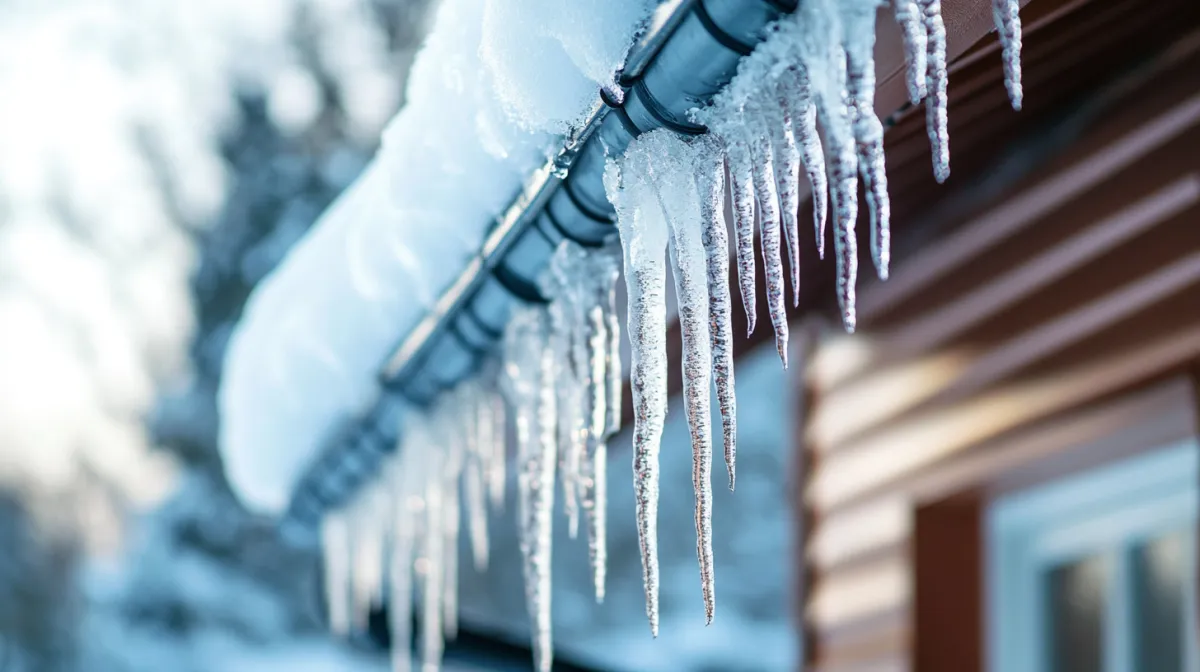
Winter Roofing Prep - Preventing Ice Dams & Snow Damage
Winter in Omaha brings heavy snowfall, icy roofs, and the risk of ice dams that can lead to serious roof damage and costly repairs. For homeowners, preparing your roof for winter isn’t just smart—it’s essential. From roof inspections to proper insulation, there are proactive steps you can take today to avoid long-term solutions like premature roof replacement.
At Teamwork Exteriors, we believe winter prep is about preventive measures, not last-minute repairs. Here's your go-to guide for protecting your roof during the colder months, maintaining energy efficiency, and avoiding roof failure caused by melted water, ice buildup, and trapped water.
Remove Excess Snow with a Roof Rake
When snow accumulates, use a roof rake to safely pull it off before it melts and refreezes. This helps reduce ice buildup, water damage, and stress on the roof structure and roof trusses. It’s one of the simplest yet most essential steps to prevent the risk of ice dams and preserve your roof deck.
Inspect for Hidden Issues Before It Snows
A professional inspection before winter sets in can reveal weak spots, potential damage, and hidden issues that lead to roof leaks or failure during extreme weather. Look for:
Sagging gutters and clogged gutters
Blocked roof vents and poor roof ventilation
Signs of water stains, mold, or roof deck soft spots
Overhanging tree branches that can damage shingles during strong winds
Hiring a roofing contractor ensures no issues are missed, and you’re ready for winter storms.
Add Proper Insulation and Attic Ventilation
Proper insulation and attic ventilation help maintain consistent temperatures, which minimizes melted snow that can refreeze and create ice dams. Poor insulation not only leads to heating costs skyrocketing but also causes melted water to pool and seep under shingles.
Working with an experienced insulation contractor ensures you get the right materials to keep energy bills in check and reduce the chances of water damage.
Install a Water Shield and Heating Cables
A water-resistant membrane, or water shield, installed under the shingles along the eaves helps block melted water from seeping into your home. Pair it with heating cables to melt ice gradually and direct water into your drainage system.
This combo is particularly useful for preventive steps on older homes and icy roofs with frequent ice dam issues.
Focus on Proper Drainage
Ensure proper drainage by clearing gutters, downspouts, and valleys of any debris. Avoid using a garden hose in freezing temps—it can worsen the problem. Instead, ensure all parts of your system are ready to handle runoff from melted snow and prevent trapped water around the eaves.
Watch for Warning Signs Throughout the Winter Months
Even with proactive measures, things can go wrong. Keep an eye out for:
Water stains on ceilings or walls
Sudden spikes in heating costs
Persistent icicles (a red flag for ice dams)
Any leaks or drafts in the attic or upper rooms
These are signs you need roofing professionals to step in before damage becomes costly.
Stay Ahead of Winter Weather
Don’t let winter weather sneak up on you. With the right preventative measures, your roof can remain safe, functional, and energy-efficient all season long. At Teamwork Exteriors, we offer the tools, tech, and expertise—from storm damage roofing repair in Omaha to best storm-resistant roofing materials—to help you stay protected.



